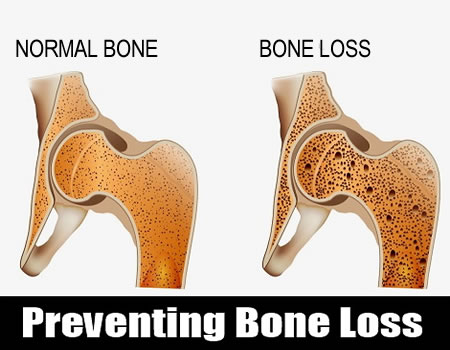Until now several medicinal plants have been found useful in preventing bone loss. Topmost on the list is Chenopodium ambrosioides that experts considered useful also in dressing of wounds, bone regeneration and fracture healing.
In a new study, researchers’ assessment of the effect of Chenopodium ambrosioides in animals, indicate that its water extract can help to promote new bone formation, and thus fracture healing.
Under laboratory conditions, the researchers evaluated the effect of an aqueous extract of Chenopodium ambrosioides on the bone repair process in 36 male Wistar rats that were randomly selected for this study.
In each animal, bone defects measuring 2 mm in diameter were performed in both bones of the arm(tibias) for placement of the substances. After three and 10 days, the animals were sacrificed, and the tissues analysed under an optical microscope.
The researchers, in the 2017 edition of Microscopic Research and Technology found that bone formation and wound closure was higher in rats that received the plant extract. This is an indication that it supported bone repair process.
Commonly called Indian wormseed, sweet pigweed, climbing black pepper or Benin pepper or ewe imí (leaf of excreter) in Yoruba, Chenopodium ambrosioides is used for treatment of many ailments.
In Congo, its leaf-sap is applied to oedemas and areas of local pain, and the aromatic smell is inhaled for headache. In Southern Nigeria, the whole plant is pounded and eaten as a laxative, and its infusion is used as a febrifuge, for indigestion, as a laxative and for coughs and tuberculosis.
In Nigeria, the seeds and buds are also used as a worm expeller just as in Congo, the plant is used to repel snakes and to cure snake bite.
Previously, these Brazilian researches in 2015 indicated that its leaf extract can also prevent bone loss. In a study of 12 rats with osteoporosis, cortical bone was significantly larger in those treated with the extract compared to the control group that had water.
The researchers reasoned in the journal, Acta Cirurgica Brasileira that the change in bone metabolism can actually preserve the bone marrow in these treated rats.
Osteoporosis is a disease in which bones become weak and fragile. Porous bones are more likely to break. It is considered a public health problem worldwide, because it affects at least 30 per cent of postmenopausal women across the world
Symptoms of osteoporosis include back pain, loss of height, a stooped posture and easily fractured bones. Fractures commonly occur in the hip, spine, and wrist. Treatments include medication to protect bone mass, dietary changes and exercise.
Bones may seem like hard and lifeless structures, but they are living tissues just like the muscle. Old bone is constantly being removed and new bone is formed.
In childhood, adolescence, and early adulthood, new bone formation outpaces the removal of old bone. As we age, however, that process reverses.
Bones make up the skeletons and provide structure and support for the body. However, bones also act like a storehouse for minerals that the body need, such as calcium.
- ambrosioides, the researchers said contain chemical substances like flavonoids and monoterpenes that generally exhibit anti-inflammatory activities, which indicate its usefulness for preventing osteoporosis.
Meanwhile, experts have named it as a natural bone substitute. In a new study, the researchers said the plant could be an adjuvant in bone regeneration.
Use of medicinal plants for graft production is a promising alternative since they are biocompatible, easily applied and stored, and have been shown to favour bone growth.
From their findings in the 2017 edition of BMC Complementary and Alternative Medicine, they indicated that the gel of the plant promotes early bone formation by stimulating bone cell production, increasing tissue resistance, and favouring better collagen deposition, being biocompatible in this rabbits.
WATCH TOP VIDEOS FROM NIGERIAN TRIBUNE TV
- Let’s Talk About SELF-AWARENESS
- Is Your Confidence Mistaken for Pride? Let’s talk about it
- Is Etiquette About Perfection…Or Just Not Being Rude?
- Top Psychologist Reveal 3 Signs You’re Struggling With Imposter Syndrome
- Do You Pick Up Work-Related Calls at Midnight or Never? Let’s Talk About Boundaries






